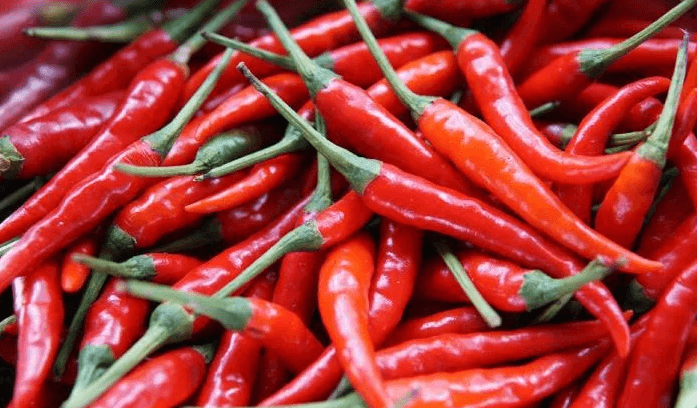
wellhealthorganic.com:red-chilli-you-should-know-about-red-chilli-uses-benefits-side-effects
Introduction to Red Chilli
Red chilli is a staple spice in many cuisines around the world, known for its vibrant color and fiery taste. This spice is derived from the fruits of plants belonging to the genus Capsicum and is used in various forms such as powdered, dried, and fresh. The journey of red chilli begins with its origins in the Americas, from where it spread across the globe through European explorers.
What is Red Chilli?
Red chilli refers to the red-colored peppers of certain Capsicum species that have been dried and often processed into flakes or powder. These chillies are not just about heat; they also contribute a subtle sweetness and a profound depth to dishes.
Read also wellhealthorganic.com:ayurveda-dinner
Culinary Uses of Red Chilli
From the smoky sauces of Mexico to the fiery curries of India, red chilli is a key ingredient that transforms simple ingredients into complex, flavorful dishes. It is versatile in culinary applications, providing both heat and flavor to sauces, marinades, and spice mixes.
Health Benefits of Red Chilli
Red chillies are more than just a spice. They are rich in vitamins C and A, and minerals like magnesium and potassium, making them a beneficial addition to a healthy diet.
Nutritional Profile
A small serving of red chilli provides a significant amount of vitamin C, essential for immune system function and skin health, along with vitamin A, which supports eye health.
Red Chilli and Metabolism
Capsaicin, the active component in red chillies, is known to boost metabolism, helping in burning calories more efficiently, which can be beneficial in weight management strategies.
Cardiovascular Health Benefits
Regular consumption of red chilli can contribute to the health of your cardiovascular system by helping to reduce cholesterol levels and improving blood flow.
Immune System Enhancement
The antioxidants present in red chilli, such as beta-carotene and lycopene, play a role in enhancing the immune system, protecting the body against free radicals.
Uses of Red Chilli in Traditional Medicine
In various traditional medicine systems, red chilli has been used to treat everything from pains to digestive issues.
Pain Relief
Capsaicin is utilized in topical ointments for its analgesic properties, providing relief from pain by reducing the intensity of pain signals sent to the brain.
Digestive Health
Red chilli stimulates the release of digestive juices, thereby improving digestion and preventing issues such as gas and bloating.
Respiratory Conditions
Traditionally, red chilli has been used in treatments for respiratory conditions like asthma and bronchitis, believed to help clear mucus from the lungs.
Read also wellhealthorganic.com/how-to-build-muscle-know-tips-to-increase-muscles
Culinary Applications
The use of red chilli in cooking is vast and varied, enabling it to add a distinct touch to dishes.
Cooking with Red Chilli
Incorporating red chilli into meals can be as simple as sprinkling some dried flakes over a finished dish or as integral as cooking it as part of the base for stews and sauces.
Preserving Red Chilli
Red chilli can be preserved in several ways, including drying, which enhances its flavor and extends its shelf life, making it available year-round.
Side Effects and Precautions
While red chilli offers numerous health benefits, it is not suitable for everyone.
Gastric Issues
For individuals with sensitive stomachs, excessive consumption of red chilli can lead to digestive disturbances like heartburn or ulcers.
Skin and Eye Irritation
Handling red chilli requires care, as the capsaicin can cause irritation to the skin and eyes. It is advised to wear gloves when handling fresh or powdered chilli.
Understanding Red Chilli Variants
The variety of red chilli available globally is vast, each with its unique flavor profile and heat level.
Comparing Different Types of Red Chillies
From the mild paprika to the blazing hot ghost pepper, red chillies can vary tremendously in heat, influenced by their capsaicin content.
Geographic Variations
Each region’s climate and soil affect the taste and heat of the chillies grown there, contributing to the distinctive characteristics of regional cuisines.
FAQs About Red Chilli
How to Choose the Best Quality Red Chilli? Look for bright, vivid colors and a uniform texture. Avoid any chillies that have a dull color or spots, which indicate spoilage.
Can Red Chilli Help in Weight Loss? Yes, the capsaicin in red chilli can increase metabolism, which may aid in weight loss by increasing the amount of calories burnt.
Are There Any Risks in Consuming Red Chilli Daily? While moderate consumption is generally safe, excessive intake can lead to gastrointestinal issues, especially in those with sensitive digestive systems.
Conclusion
Red chilli is a powerful spice with a rich history and a multitude of uses, benefits, and some side effects. Incorporating the right amount of red chilli in your diet can enhance your health and add zest to your meals, making it a beloved spice worldwide.




